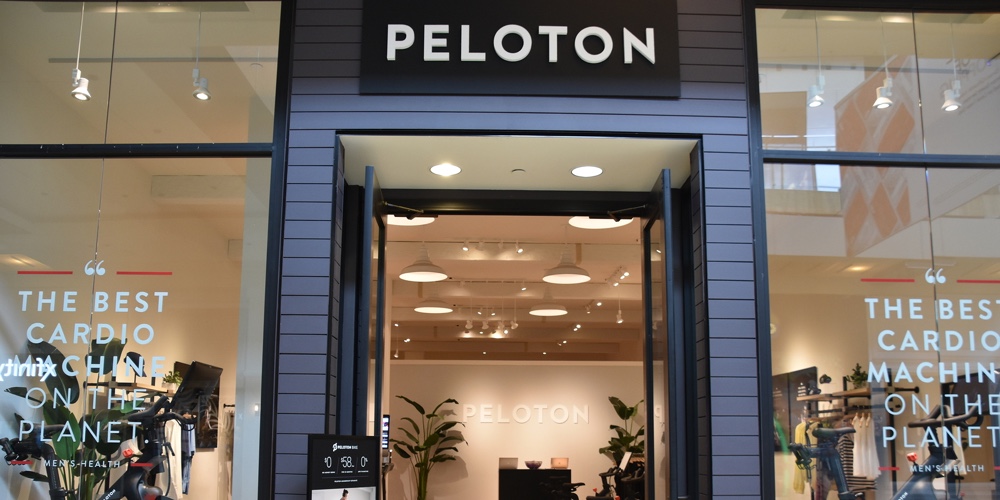By now you've probably seen thePelotonad...or at least heard it mentionedat aholiday party. The biglessonfor your credit union no one is talking about is the root of why it caused such an uproar--and it's more than "make abetter ad."
Unfortunately, most businesses (credit unions included) are at risk of being the next Peloton without even realizing it. At its core, the problem is with brand inconsistency and not having a well-defined niche.
A tale of two Pelotons
Peloton is living a double life. It is walking the line between being designed "to connect the world through fitness" (which promotes inclusivity and being for everyone, anywhere) and ads that focus on a very specific demographic (wealthy, already reasonably fit--or at least thin--people).
Peloton's problem (and one many businesses suffer from) is theads are speaking to one person and the mission is speaking to another. This stems from not committing to a persona, a "well, it's designed for our persona, but anyone could benefit so we are for everyone" mentality.
The problem is,people evaluate brands just like they evaluate people. How long would you want to be around someone who was constantly contradicting themselves?
The good news is, this can be fixed relatively simply, but it takes dedication to one singular path. It's time to choose what matters most and put all the eggs in that basket. Here is what each scenario could look like for Peloton (and either way is perfectly fine):
Go with the ads: exclusive with a high-income target market
Think about a brand like Maserati--no one is complaining about their ads not being targeted for everyone. It has clearly defined itself as being for a certain group and income level so there is no reason to get upset at a commercial targeted to those who can afford it.
In this scenario, Peloton would need to come out and say, "we are a high-end product made for people who want to invest in themselves and help already fit people shed those last few pounds with the motivation of a group in the comfort of their own homes."
Now all their ads make sense and perfectly fit that brand after this slightreframe.
There is no body fat percentage calculator keeping less-than-fit people from buying or using their bikes. And, because we humans areinherently aspirationaland strive to be part of the group, it would likely encourage those just below this tier to buy as well.
Think about it, when you read that did you have a little spot in the back of your brain think, "well, if it can help already fit people get over their plateaus, I wonder what it would do for me!" You can picture yourself getting fitter with Peloton, and you also are less likely to get offended when the people in the ad don't look like everyone in the world. You aren't their ideal customer...yet. (But you might get there faster if you invest in yourself today.)
Go with the mission: inclusive and for everyone
Humans relate better to people like us--the ingroup--and without enough context our brains will write a story that fits our own personal narrative. Far too many people struggle with their weight and are sensitive to anything remotely resembling telling us we need to exercise more. It's a raw nerve.
A slight lack of context allowed the internet to assume the husband in the commercial was telling the woman she was fat and needed to exercise more.
What if the ad started with her leaving little notes for her husband to find? Perhaps sticky note on the fridgesaying, "Reminder: Order Suzie's Peloton ;)"
Or maybe missing a spin class because she got stuck at work and couldn't make it in time--perhaps a quick text of "sorry babe, won't make spin again today...meeting ran long :("
Now we know shewantsa Peloton. It will let her fulfill her dreams and potentially convey everything the company assumed would be the accepted baseline of their ad.
Unfortunately, you can't assume everyone will have the same understanding of your protagonist as you do. These context points are critical to help everyone understand the story--especially when tapping into a touchy subject like weight.
This ad would include a few shots focused on the interaction with others so it feels as thoughyou're in the same place, likeAmazon Echo has done in their commercials.Then, you close with a grid of diverse faces, sweating and smiling with a line like, "The many faces of Peloton. Are you ready to start your journey?"
Either ad works fine--but they only work if you pick a lane. Is your credit union fully in alignment throughout the entire organization…or are you set to be the next Twitter victim?







